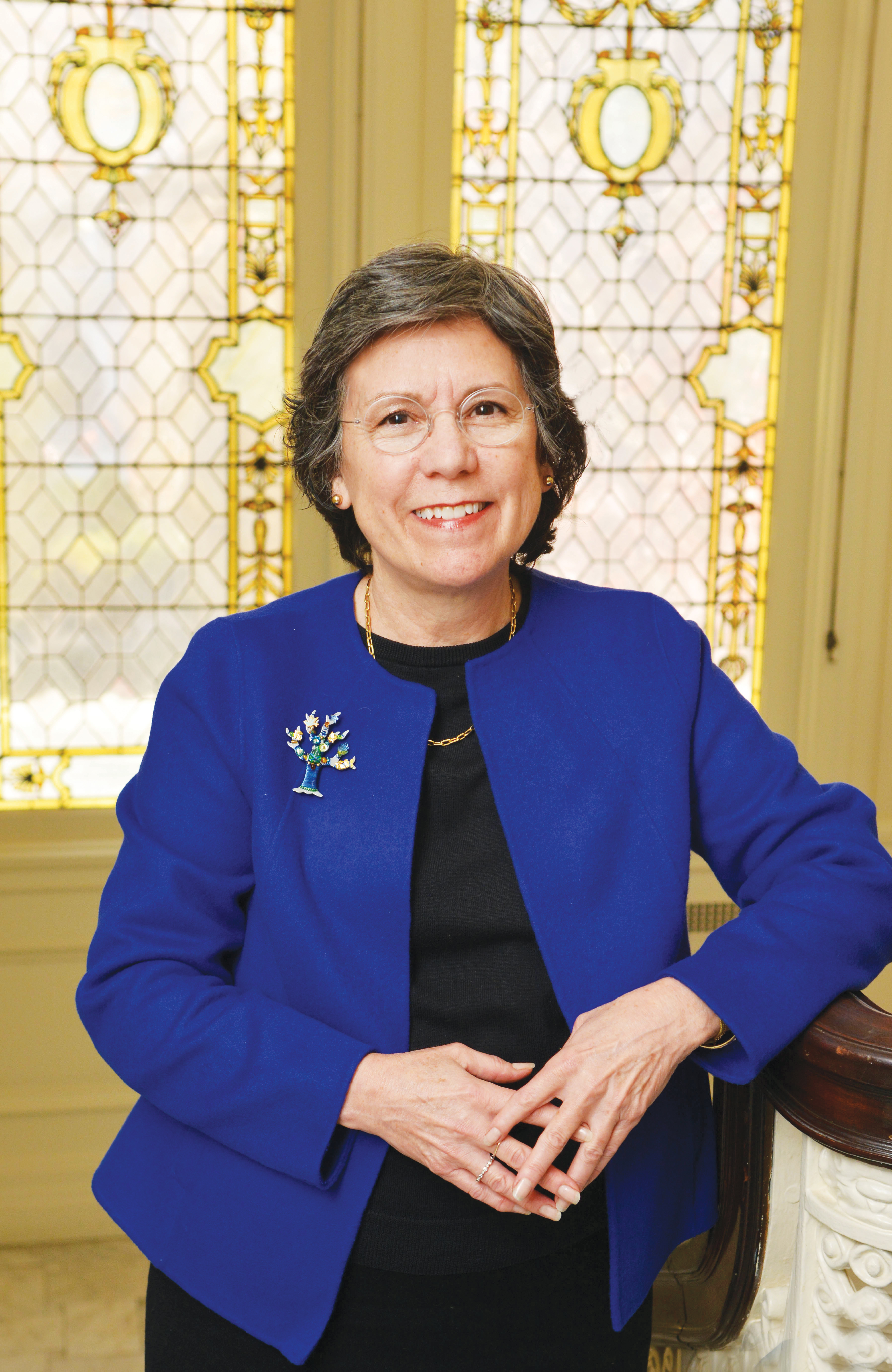
Michael Marsland
Senior Advisor to the University President Martha Highsmith DIV ’95, who has served in a number of roles at Yale for 22 years, will retire in January.
University President Peter Salovey announced Highsmith’s retirement in an Oct. 14 email to University leaders and Highsmith’s colleagues. After stepping down in January, she will continue to serve as a University representative to the Yale Alumni Magazine and will offer consultation on University affairs. Salovey said that after Highsmith’s retirement he will not seek a new senior advisor.
“It has been an honor to be part of all of this,” Highsmith said of her time at Yale. “There have been wonderful, exciting times, and there have been horribly sad and tragic times. In the roles that I’ve had, I’ve been able to be part of all of that — the full scope of what happens at the University, the joy and celebrations and the sadness and the sorrow. And what I have observed is that, in all of that, this is a University that comes together and is made stronger by supporting each other.”
Highsmith arrived at Yale in 1994, serving as both the deputy secretary to former University Secretary Linda Lorimer and as the associate vice president of the University. When Salovey assumed office in 2013, he asked her to serve as his senior advisor, citing her expertise with a wide range of University departments and issues.
In 1993, while working under then-Connecticut Gov. Lowell Weicker ’53, she was appointed interim chief operating officer for Science Park. During that time she met and worked with Lorimer, who told the News that Highsmith was “a marvel to behold.” Lorimer brought Highsmith to the University in 1994, a choice Lorimer said was the best decision she made at Yale.
“I think she has a sixth sense in seeing how to make a department or organization better, and she has an incredible [sense of] how to bring out the best in individuals,” Lorimer said. “She could rise to take leadership for something entirely unforeseen but also have great leadership in advancing a major project, like [Yale’s] sustainability project, or working with faculty on these recent searches for new deans.”
At Yale, Highsmith oversaw public safety and the development of the Yale Security Department in 1996 and played a key roll in launching the University’s emergency management program, which includes prepared responses to possible on-campus emergencies. Lorimer said Highsmith was also a driving force behind the 9/11 remembrance ceremonies at Yale and served as “the face and heart” of the University for grieving families.
Former University President Richard Levin said Highsmith perfected the execution of Yale’s major ceremonial events like Commencement and Freshman Assembly. Highsmith was also involved in the creation of the Sustainability Strategic Plan, served as the senior pastor of University Church in Yale and is a lecturer in the Divinity School.
“The result of playing those and many other roles at Yale helped Martha develop into a person with a broad knowledge of lots of different parts of the University, one-on-one relationships with an awful lot of people at Yale and most important, a lot of wisdom and knowledge about the diverse considerations behind decisions that have to be made fairly quickly,” Salovey said. “I relied on her a lot for background on decisions that had multiple constituencies caring about them, that might have had a historic angle to them but that also might need to reflect contemporary sensibilities as well.”
Salovey also emphasized Highsmith’s crucial role in staffing the search committees that selected eight new deans, five new vice presidents, 10 new residential college heads and Provost Ben Polak. While there is unlikely to be the same volume of searches and new appointees in the coming years, Salovey said, Highsmith’s influence on searches will nonetheless be missed.
Longtime Yale administrator Sam Chauncey ’57, who praised Highsmith both for her administrative ability and calmness in high-pressure situations, said that Highsmith was well-liked among students. Chauncey added that Highsmith’s stable demeanor in crisis situations is part of what made her so effective as an administrator.
“She is very calm if there is a problem that is causing a lot of turmoil and upset,” Chauncey said. “She is one of those wonderfully calm people that keeps right on working. She doesn’t let the flak or what’s going on around her bother her, she just keeps on moving ahead with dealing with the problem.”
Highsmith said she is especially proud of her work with the Yale Security Department, which included moving the department from a centuries-old house into new facilities. Another particularly significant event in Highsmith’s tenure at Yale was the visit of then-Chinese President Hu Jintao, who came to the University in 2006 in what Highsmith called a “historic occasion.”
In Highsmith’s absence, Jack Callahan Jr. ’80, the inaugural vice president for operations, will oversee the elements of emergency planning and business while Janet Lindner, the deputy vice president for human resources and administration, along with three other administrators, will take over crisis management.
“I felt for my first three years as president it was important to have a senior advisor who was an experienced hand at many parts of the University and who could help me with all of these searches for new academic, residential college and administrative leaders,” Salovey said. “But I am not going to replace her with another senior advisor because I think the next several years are different from the first few years as president, and my needs are different.”
Highsmith received her Ph.D. from Harvard and is an ordained minister.







